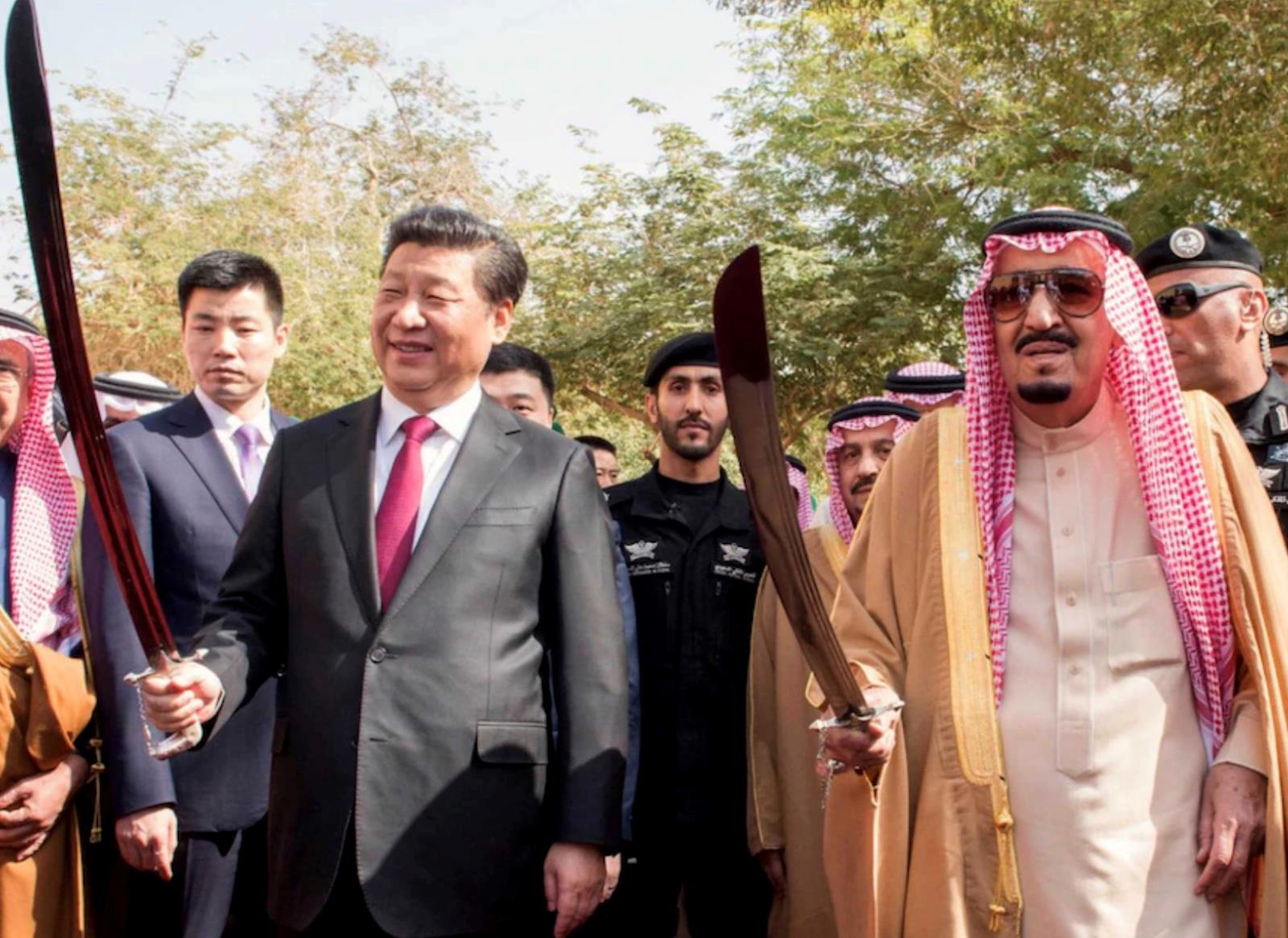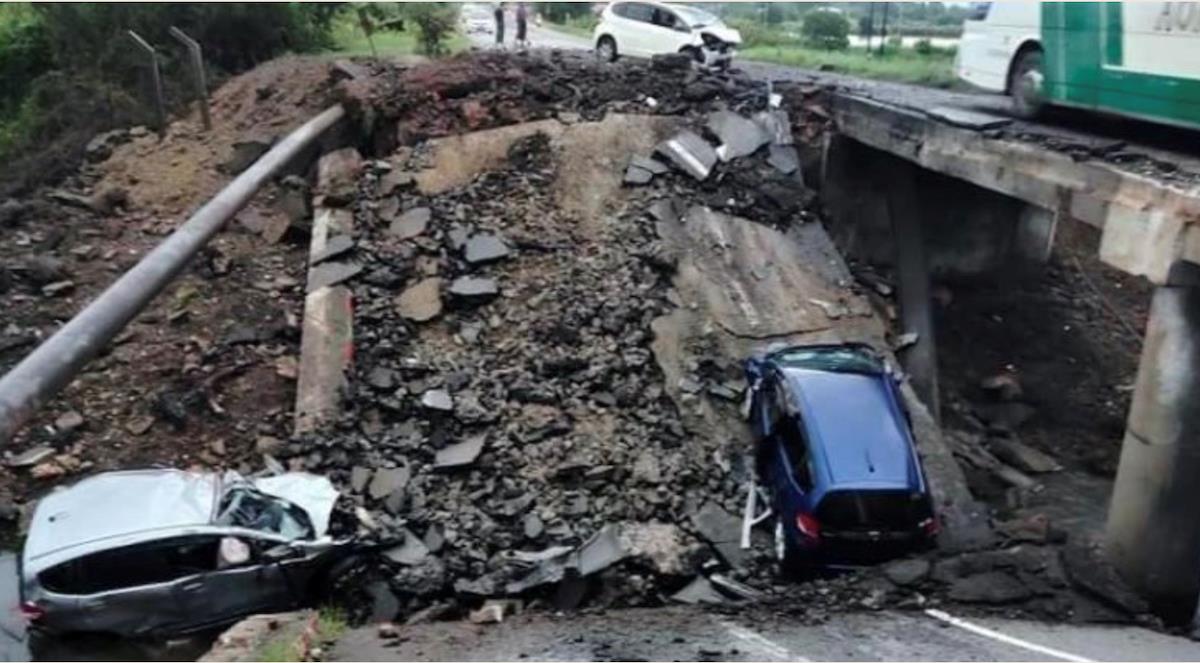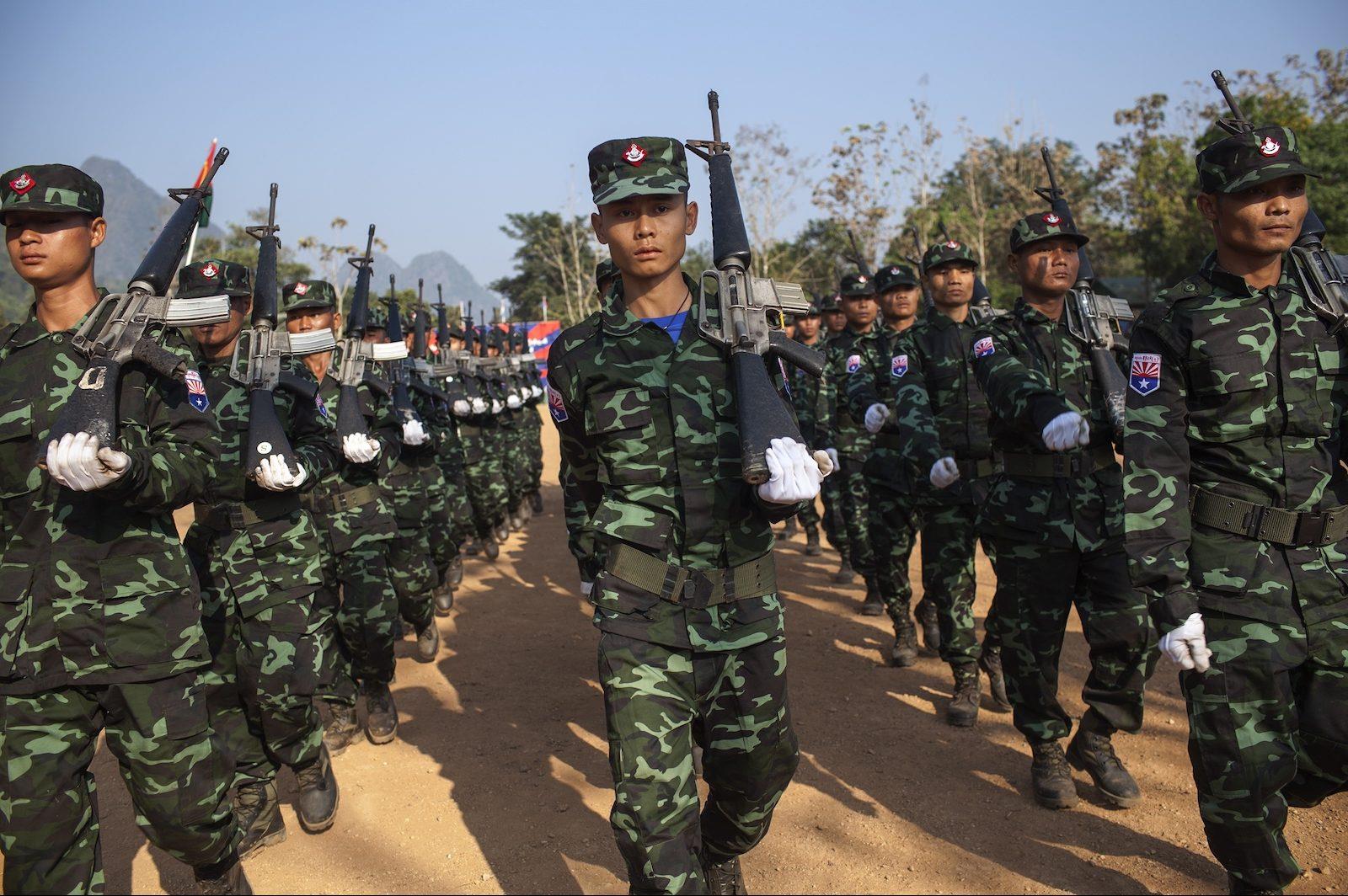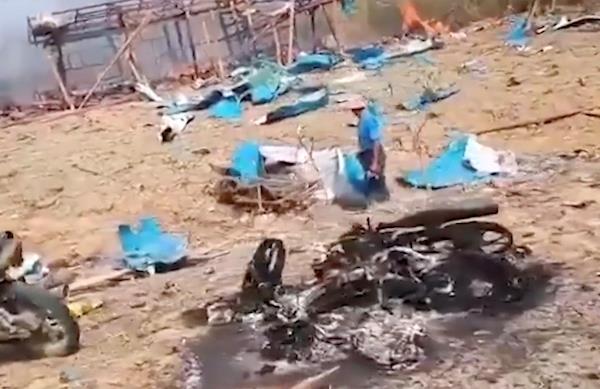The State Administration Council (SAC) junta's woes were compounded by additional US sanctions on a listing banking sector, Chinese-brokered talks with three key ethnic armies that ended in failure and the first defections of entire military units to the anti-coup opposition, undercutting the regime's already tenuous hold on a swathe of eastern Kayah state.
Attracting less attention amid the apparent confusion of a“war of a thousand cuts” was a string of attacks, also in the east of the country, that viewed together should have worried army headquarters in Naypyidaw rather more than the loss in Kayah of two ethnic Karenni Border Guard Forces (BGF) battalions of transparently dubious loyalty.
Underpinned by a notable new level of strategic planning and tactical execution, the opposition's June strikes highlighted an operational approach which, as it gains traction across a multi-front war, is calculated to aggravate the central vulnerability of an army trapped between a crippling lack of manpower and overly extended areas of operations.
The attacks also belied suggestions that unchallenged regime airpower can impose a military stand-off in which a better-resourced SAC needs only to wait out ethnic and political fissures in the opposition camp.
Not by coincidence, the series of coordinated assaults through the month zeroed in on bridges.
While geographically scattered, the attacks conveyed a clear message: For the first time, joint ethnic and Bamar resistance forces have conducted operations reaching into the national heartland to target infrastructure that is essential to the resupply of an army already facing a critical shortage of transport helicopters and that cannot be defended by airpower.
Beginning at dawn on June 1, the first operation involved a wave of synchronized assaults by forces of the Karen National Liberation Army (KNLA)'s 1st Brigade and allied, newly-formed People Defense Force (PDF) units on posts at both ends of the Donthami bridge.
A major span across the Donthami River near Thaton, the bridge is situated on the Asian Highway where it passes through Mon state linking Yangon to the Karen state capital of Hpa-an and the trade hub of Myawaddy on the Thai border.
The clashes reportedly continued for some 90 minutes and backed up traffic for a lot longer. While media reports of 45 army troops killed were likely inflated, the aggressive assaults probably intended to overrun the posts guarding the bridge had most certainly occurred.
Less than a week later, on June 6, a second operation in Kyaukkyi township of Bago region underscored the fact that the Donthami raid had not been a one-off.
Launched again at dawn, the action brought together a joint task force from the KNLA's 3rd Brigade and allied PDFs and reportedly saw a police station and four army posts overrun followed by the demolition of the Bonthataw bridge across the Sittang River.
While accounts of up to 30 soldiers and police killed remain unconfirmed, drone images of the collapsed easternmost section of the bridge where the wide concrete structure meets the riverbank left no doubt that road connectivity between Kyaukgyi, east of the river and Kyauktaga on the west bank, a town on the main Yangon-Naypyidaw road and rail line, had been severed for at least the coming months.
On the same day, KNLA-led forces also reportedly blew a smaller bridge at Nat Ywar in Htantabin township, north of Kyaukgyi, not far from the transport hub of Toungoo city. That marked the second bridge destroyed in Htantabin in the space of ten days.
According to an official report carried May 30 on the state-run website myanmar.gov.mm,“PDF terrorists” had already destroyed an iron bridge on a road leading to a much larger bridge over the Sittang on May 26.
Latest stories

wolfspeed-renesas deal heralds the future of power chips

ai will continue to create smarter robots

sino-saudi economic engagement deepens
The most disruptive attack, however, was again on the main Asia Highway artery in the early hours of June 29 when sappers of the KNLA 1st Brigade and PDFs brought down a 24-foot (7.3 meter) wide section of the Kyone Eit Bridge in Mon state's Bilin township.

The collapsed section of Kyone Eait Bridge after a joint KNLA-PDF attack. Image: The Irrawaddy / Screengrab
Daylight images of the scene indicated that a major explosion had collapsed two-thirds of the bridge into the canal below, destruction that later took the life of an unfortunate motorist who at speed or in pre-dawn darkness drove his car into the newly-opened abyss.
Deliberately, however, the demolition squad had laid charges that left one 12-foot wide lane supported by two concrete pillars still navigable for road passage but inevitably resulting in major traffic bottlenecks.
The bridge blast was followed up by clearly well-prepared attacks by armed drones on regime officials inspecting the damage later in the morning, in which two were killed and some 27 others, mostly police and soldiers, wounded – a blitz which incidentally served to underscore the lethal advances in the resistance's drone capabilities.
Evolving resistance Against the backdrop of the typically chaotic, come-as-you-please attacks on regime facilities that for many PDFs in central Myanmar are still the preferred approach to war, June's Karen-led bridge raids stood out at the tactical level as striking examples of planning and execution that the National Unity Government's (NUG's) Ministry of Defense would do well to disseminate as lessons-to-be-learned across resistance ranks more broadly.
As complex operations requiring effective integration of disparate elements, success hinged on careful target selection and planning; up-to-date intelligence; reaching targets in darkness but on time; and then synchronizing the roles of several teams with different tasks at different locations, including those conducting preliminary assaults on posts calculated to disperse the impact of retaliatory artillery strikes and the follow-on demolition squad equipped with military-grade explosives and the training to use them to effect.
In the case of the Sittang bridge operation of June 6, all of that needed to be followed by withdrawal in daylight amid an alert and angry enemy reacting both on the ground and from the air.
Strategically, the geography of operations, presumably loosely coordinated between the NUG's regional commanders and relevant KNLA brigades, was no less telling.
In the Sittang valley, the sabotage of key bridges increases pressure on isolated regime positions in a corridor of territory running north-south between the resistance-dominated Karen hills in the east and the river in the west. Linking this string of small garrisons is an already vulnerable secondary road between Toungoo in the north and Shwegyin in the south.
Kyaukgyi sits halfway along the corridor, a lynchpin town that the destruction of the Bonthataw bridge has now largely cut off from resupply by road from west of the Sittang. The coming months of the rainy season are likely to see stepped-up interdiction of the road by guerrilla forces now operating along its entire length, and possibly the abandoning or fall of the isolated regime positions it connects.
As commanders on both sides of the conflict are fully aware, a few short kilometers across the river on its west bank lie the main road and rail arteries linking Yangon to the capital Naypyidaw and the central city of Mandalay.
Those national arteries, in turn, are overshadowed by the central spine of the Bago Yoma mountains where in earlier conflicts Karen and communist guerrillas established base areas and springboards for attacks.
To the south in Mon and Karen states, the strategic threat posed by the KNLA-PDF alliance is far more immediate: aggressive guerrilla operations already threaten road connectivity between major cities.

Karen National Liberation Army (KNLA)'s Seventh Brigade parading as part of celebrations marking the 66th Karen Revolution Day at their headquarters in Myanmar's eastern Kayin state in a file photo. Photo: Asia Times files / AFP/ KC Ortiz
The June bridge attacks marked a significant escalation of pressure exerted earlier in the dry season by the KNLA's Thaton-based 1st Brigade and its affiliated PDFs on highways connecting Yangon, Mawlamyine (Moulmein) and Hpa'an.
Operations in the Thaton-Bilin zone in Mon state mirror a trend seen further east along the main road to the Thai border, where the KNLA's 6th Brigade and PDFs have been constantly active in and around the highway towns of Kyondo and Kawkareik.
The cumulative impact of this activity has been a sharp spike in army casualties and the sacking of the commanders deemed responsible.
In early April this year, Major General Myat Thet Oo, commander of the Mawlamyine-based Southeastern Regional Military Command, was relieved of his post and later consigned to see out his career as ambassador to Laos.
His boss, Lieutenant General Khun Hlaing, head of Bureau of Special Operations No 4 which oversees operations in both Karen and Mon states, was also abruptly fired.
Roadblocking the regime At a stage of the war when the capture of urban centers by opposition forces is neither practical nor desirable, a strategy of squeezing key lines of communication connecting them is emerging by default as an optimum way forward.
As evidenced in June across the KNLA's wide Karen-Mon-Bago area of operations, the approach requires loose operational coordination at the regional level rather than any overarching and ultimately counter-productive attempt to impose strategic coordination on ethnic armed organizations operating in different parts of the country and facing very different military and political constraints.
In some cases, the pressure of constant ambushes central to this insurgent strategy has forced the military to essentially abandon key roads where the cost in lives and vehicles has come to outweigh the value of keeping them open.
The road between Kalay, a regional operations command center in northwest Sagaing and the crossroads town of Gangaw in Magwe region to the south, offers a striking case in point.
An extended 120-kilometer-long artery skirting the Chin Hills, which from late 2021 through 2022 was the scene of weekly clashes and army reprisal attacks on villages, the road has been abandoned this year as the military pulled back to its Kalay redoubt.
Along major highways the regime cannot afford to surrender, the alternative resistance scenario involves a campaign of ongoing ambush and disruption reinforced where possible by the blowing of bridges and the hemorrhaging of army manpower such assaults inflict.
This reality has already emerged both along so-called“IED Alley”, the highway between Sagaing City and Monywa, headquarters of the military's Northwestern Command; and in a very different shape involving larger, better-organized and better-equipped Karen and PDF forces along the Asia Highway in Mon and Karen states.
The strategy's success can be measured as military movements become fewer and concentrated in larger convoys that require the escort of armored fighting vehicles and helicopter gunships.
The military has already been forced to resort to this expedient in western Chin state and along stretches of the Ayeyarwady River in the Sagaing-Kachin border region where gunship escorts have been deployed to protect riverine movement of supply barges headed north.
Air war folly These trends are emerging against the backdrop of the Myanmar Air Force's failure to achieve appreciable impact on the battlefield.
Despite record numbers of sorties flown this year, at huge cost in ordnance dropped and fuel expended, the brunt of the MAF'S air war has fallen on civilians while resistance forces operating in small units without easily identified logistics hubs have suffered seemingly minimal casualties.
Indeed, the overall impact of the MAF's campaign has been primarily psychological: terrorizing civilians while bolstering the morale of embattled penny-packet regime outposts.

The grisly aftermath of a Myanmar military aerial bombing of Pazigyi Village in southern Sagaing Region, April 11, 2023. At least 100 people were killed in the attack. Image: Screengrab / YouTube
In far more lethal conflicts from World War II onwards, air assaults on civilian populations have ultimately proved counter-productive, fanning popular resolve to fight. Scrambling to support positions under mounting pressure, but ultimately too numerous all to be defended from the air, the military prong of MAF strategy represents at best a“finger in the dyke.”
In protracted conflicts that fail to provide sufficient daily drama easily measured in lives lost or kilometers gained, the international news industry is inclined to declare a“stalemate” and move on. Over the past year, Myanmar has been no exception to this tendency sometimes wrapped in the reassuring conclusion that the war is one that“neither side can win.”
How or even if Myanmar's popular opposition can“win” remains to be decided but it would be folly to discount the remarkable mobilization, sustainability and access to armaments it has achieved in two short years – advances that, as indicated in June, continue to evolve in ways that are not immediately obvious but undoubtedly significant.
In the context of a civil war that is in many ways unprecedented, speculation into the future is of dubious value. But if current trajectories are any guide, it might focus more usefully less on who will win and more on how and when the nation's floundering military will lose.
Like this:Like Loading... Related